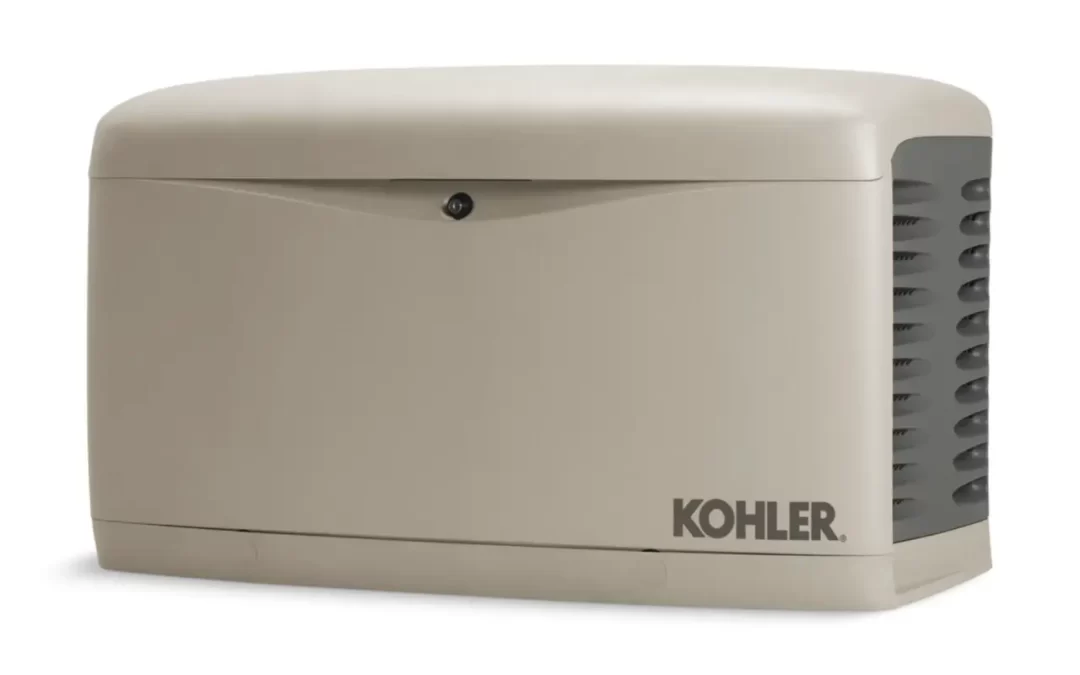For all your residential, commercial & industrial needs
1. Introduction: Understanding the Importance of Determining Appropriate Kilowatts for Residential Electricity Generation
Choosing the appropriate kilowatts for residential electricity generation is a crucial consideration for homeowners seeking to meet their energy needs efficiently and economically. Understanding the specific energy requirements of a home is paramount in ensuring optimal performance of electrical systems while avoiding unnecessary costs or power shortages. This article provides a comprehensive guide to determining the ideal kilowatts for home use, taking into account various factors that influence residential electricity consumption. By delving into the calculation methods, energy efficiency strategies, available generation systems, and the role of renewable energy sources, homeowners can make informed decisions to meet their energy demands sustainably and effectively.
1. Introduction: Understanding the Importance of Determining Appropriate Kilowatts for Residential Electricity Generation
1.1 The significance of accurate kilowatt determination
When it comes to residential electricity generation, determining the appropriate kilowatts for your home is crucial. It’s like finding the right size shoe – you don’t want it too big or too small. Accurate kilowatt determination ensures that your electricity generation system is sized correctly, preventing unnecessary costs and ensuring optimal performance.
1.2 Impact of overestimating or underestimating kilowatt requirements
Overestimating or underestimating your kilowatt requirements can have significant consequences. If you overestimate, you may end up with a system that’s too large, resulting in wasted resources and higher upfront costs. On the other hand, underestimating can lead to a system that’s unable to meet your energy needs, leaving you in the dark when you need power the most. It’s all about finding that perfect sweet spot to avoid any unnecessary headaches.
2. Factors Influencing Residential Electricity Consumption: A Comprehensive Overview
2.1 Understanding the dynamics of electricity consumption patterns
Electricity consumption patterns can vary greatly depending on factors such as time of day, season, and household habits. For example, during the summer, air conditioning units may consume a significant amount of electricity, while in winter (not here in Florida but up north), heating systems take the lead. Understanding these patterns is essential in accurately determining your kilowatt needs.
2.2 Climate and weather-related factors affecting electricity consumption
The climate you live in plays a significant role in your electricity consumption. In regions with extreme temperatures, more energy may be required to keep your home comfortable. Whether it’s blasting the AC or cranking up the heat, these weather-related factors need to be taken into account when calculating your kilowatt requirements.
2.3 Size and layout of the residential property and its impact on energy needs
The size and layout of your home can have a surprising impact on your energy needs. Larger properties may require more energy to adequately power all the rooms and appliances. Additionally, the way your home is designed can affect its energy efficiency, with factors like insulation and window placement influencing your kilowatt requirements.
2.4 Appliances and devices: Assessing their energy demands
Let’s not forget about the energy-hungry culprits lurking in our homes: appliances and devices. From refrigerators and washing machines to TVs and gaming consoles, each device has its own energy demands. It’s essential to take into account the energy consumption of these appliances when calculating your kilowatt needs. Better to be prepared than get a shocking surprise.
3. Calculating the Energy Requirements: How to Determine the Ideal Kilowatts for Home Use
3.1 The importance of conducting an energy audit
To determine the ideal kilowatts for your home, conducting an energy audit is crucial. It’s like taking a thorough inventory of your energy consumption. By assessing your current usage patterns and identifying areas for improvement, you can get a clearer picture of your energy requirements.
3.2 Key factors to consider when calculating energy needs
When calculating your energy needs, several key factors come into play. These include the number of occupants in your home, their daily activities, the types of appliances and devices used, and any specific energy-intensive activities like running a home office or charging an electric vehicle. By considering these factors, you can more accurately determine your kilowatt requirements.
3.3 Using historical energy consumption data as a basis
If you’re unsure where to start, using historical energy consumption data can provide valuable insights. Look at your utility bills over the course of a year to identify any consumption patterns or spikes. This data can help you estimate how much energy you’ll need on a monthly or yearly basis, giving you a solid foundation for determining the appropriate kilowatts for your residential electricity generation.
4. Assessing Energy Efficiency: Tools and Techniques for Optimizing Residential Electricity Generation
4.1 Understanding energy efficiency and its impact on electricity generation
Energy efficiency is like the superhero of electricity generation. It focuses on maximizing the output while minimizing waste. By implementing energy-efficient measures in your home, such as using LED light bulbs, insulating your windows, and upgrading to energy-efficient appliances, you can reduce your overall kilowatt needs and optimize your residential electricity generation.
4.2 Strategies for improving energy efficiency in residential settings
Improving energy efficiency doesn’t have to be a daunting task. Simple strategies like turning off lights when not in use, unplugging electronics on standby mode, and properly maintaining your HVAC system can go a long way in reducing your energy consumption. Plus, these energy-saving habits have the added bonus of saving you money on your electricity bills. Who doesn’t love a win-win situation?
4.3 Utilizing smart home technology to optimize electricity usage
Welcome to the era of smart homes, where technology and energy efficiency join forces. Smart home devices, like programmable thermostats and smart power strips, offer innovative ways to optimize electricity usage. By automating and controlling various aspects of your home’s energy consumption, you can further fine-tune your kilowatt needs and make your residential electricity generation even smarter. It’s like having a personal energy guru at your beck and call.
Remember, finding the appropriate kilowatts for your residential electricity generation is key to achieving the perfect energy balance. By considering factors like electricity consumption patterns, climate, property size, and appliance energy demands, and by focusing on energy efficiency, you can ensure that your home is powered just right. So go forth and conquer the kilowatts, my fellow energy enthusiasts!
5. Choosing the Right Residential Electricity Generation System: Exploring Various Options
5.1 Overview of different residential electricity generation systems
When it comes to generating electricity for your home, there are several options to consider. From solar power systems to wind power and micro-hydroelectric systems, each option has its own set of pros and cons. Understanding the different systems available is crucial in determining the best fit for your home.
5.2 Pros and cons of solar power systems
Let’s shine a light on solar power systems. The sun, our very own celestial power plant, can be harnessed to generate electricity for your home. With solar panels installed on your roof, you can convert sunlight into usable energy. The pros? Solar power is clean, renewable, and can potentially save you money on your electric bills. However, the initial costs of installation can be quite high, and the efficiency of solar panels depends on factors like sunlight availability and panel orientation.
5.3 Wind power systems: Is it a suitable option for your home?
If you’ve ever stood on a windy hill or watched wind turbines gracefully spinning in the distance, you might have wondered if wind power is a viable option for your home. Wind power systems harness the power of the wind to generate electricity. The pros? Wind power is another clean and renewable energy source. It can provide a consistent flow of electricity, especially in windy areas. However, wind power systems can be expensive to install, require a minimum wind speed to be effective, and may face aesthetic concerns for some homeowners.
5.4 Evaluating the feasibility of micro-hydroelectric systems
Now, let’s dive into the world of micro-hydroelectric systems. These systems harness the power of flowing water, like a river or a stream, to generate electricity. If you have access to a water source with a steady flow, this can be a great option. The pros? Micro-hydroelectric systems are highly efficient, reliable, and have a relatively long lifespan. However, they require access to flowing water and may have site-specific limitations, making them suitable for specific locations only.
6. The Role of Renewable Energy Sources: Integrating Sustainable Solutions for Home Electricity Generation
6.1 The environmental benefits of renewable energy sources
When it comes to generating electricity for our homes, considering renewable energy sources is not just a good idea – it’s a vital step towards a more sustainable future. Renewable energy sources, such as solar power and wind power, have a significantly lower impact on the environment compared to fossil fuels. By reducing our reliance on non-renewable resources, we can help mitigate climate change and protect precious natural ecosystems.
6.2 Exploring the potential of solar energy for residential electricity generation
Solar energy is one of the shining stars in the world of renewable energy. Not only does it offer a clean and abundant source of power, but it also has the potential to meet a significant portion of our residential electricity needs. With technological advancements and decreasing costs, solar panels have become more accessible than ever. By harnessing the power of the sun, we can reduce our carbon footprint and take control of our energy consumption.
6.3 Wind power as a sustainable solution for home electricity needs
Wind power is another sustainable solution that has gained momentum in recent years. As the wind blows, wind turbines spin and generate electricity. Besides being a clean source of energy, wind power can be a reliable option, especially in areas with consistent wind patterns. By utilizing this natural resource, we can tap into a constant stream of power that doesn’t deplete the earth’s resources or contribute to greenhouse gas emissions.
So, whether it’s through solar power systems, wind power, or micro-hydroelectric systems, exploring these renewable energy options can help us create a better and brighter future for our homes and the planet.
In conclusion, determining the appropriate kilowatts for residential electricity generation is essential for homeowners to effectively and efficiently meet their energy needs. By considering factors such as energy consumption patterns, property size, and the efficiency of appliances, individuals can accurately calculate their energy requirements. Exploring various generation systems and incorporating renewable energy sources can further optimize residential electricity generation. By making informed decisions and embracing sustainable solutions, homeowners can not only reduce their carbon footprint but also save on electricity costs in the long run. With a clear understanding of their energy needs, homeowners can power their homes responsibly while enjoying the benefits of a reliable and efficient electricity supply.
For all your residential, commercial & industrial needs
FAQ
1. How can I determine the appropriate kilowatts for my home?
Calculating the ideal kilowatts for your home involves considering factors such as your energy consumption patterns, the size and layout of your property, and the energy efficiency of your appliances. Conducting an energy audit and analyzing historical energy consumption data can provide valuable insights into your specific energy requirements.
2. What are the benefits of incorporating renewable energy sources into residential electricity generation?
Integrating renewable energy sources, such as solar power or wind power, into residential electricity generation offers numerous benefits. Firstly, it reduces reliance on fossil fuels, contributing to a greener and more sustainable future. Additionally, renewable energy can potentially lower electricity costs over time and provide energy independence for homeowners. Furthermore, using renewable sources helps to mitigate the environmental impact associated with traditional electricity generation methods.
3. Are there financial incentives available for investing in residential electricity generation systems?
Yes, there are often financial incentives available for homeowners who invest in residential electricity generation systems. These incentives can include tax credits, grants, or rebates provided by government entities or utility companies. It is advisable to research and consult with local authorities or energy providers to determine the specific incentives available in your area.


